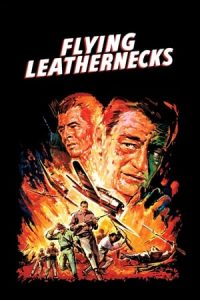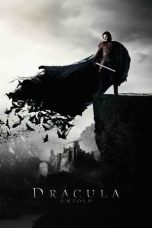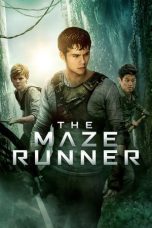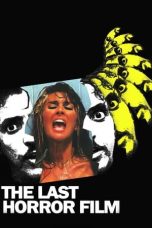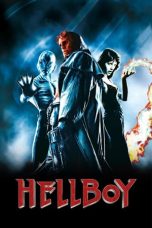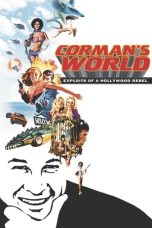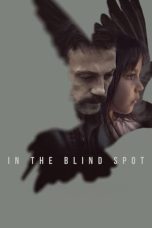- Source: The Highwayman (1951 film)
- The Highwayman (film 1951)
- Edward Peil Sr.
- The Irresistible Lover
- Nomadland
- Daftar orang yang pindah ke Katolik
- Daftar penulis Katolik
- The Highwayman (1951 film)
- Highwayman (disambiguation)
- Highwayman
- The Highwayman (poem)
- 1951 in film
- A Wonderful Life (film)
- List of American films of 1951
- Wanda Hendrix
- Hammer filmography
- Dick Turpin's Ride
Maze Runner: The Scorch Trials (2015)
T-34 (2018)
John Carter (2012)
About Time (2013)
Beauty of Beauties (1965)
A Million Miles Away (2023)
2001: A Space Odyssey (1968)
Zack and Miri Make a Porno (2008)
Shoah (1985)
Corman’s World (2011)
Blade (1998)
Watching the Detectives (2007)
No More Posts Available.
No more pages to load.
The Highwayman is a 1951 American historical adventure film directed by Lesley Selander and starring Philip Friend, Wanda Hendrix and Cecil Kellaway. The film was shot in Cinecolor and distributed by Allied Artists, the prestige subsidiary of Monogram Pictures. It was based on the poem of the same name by Alfred Noyes.
Plot
The Highwayman is an aristocrat who leads a band of criminals who steal from the wealthy to distribute to the needy. Their campaign is broadened when they discover that innocents are being kidnapped and sold into slavery in the colonies. The Highwayman is betrayed to the authorities, soldiers march to set an ambush, his lover Bess sacrifices herself to give warning and he is shot down on the highway as he tries to take revenge. At the end of the film, as the last two stanzas of the poem are read, the Highwayman's ghost is seen riding up to the window of the old inn, where he and the ghost of Bess happily greet each other.
Cast
Philip Friend as Jeremy
Charles Coburn as Lord Walters
Wanda Hendrix as Bess Forsythe
Cecil Kellaway as Lord Herbert
Victor Jory as Lord Douglas
Scott Forbes as the Sergeant
Virginia Huston as Lady Ellen Douglas
Dan O'Herlihy as Robin
Harry Morgan as Tim
Albert Sharpe as Forsythe
Lowell Gilmore as Oglethorpe
Alan Napier as Barton
Norma Varden as Dowager at Ball
Robert Karnes as British soldier
John Alderson as British Soldier
Production
The film was based on a poem by Alfred Noyes written in 1906. Film rights were owned by James Burkett, who sold them to Monogram Pictures in 1946. Monogram announced that Noyes would collaborate on the script with Jack De Witt and Renautt Duncan and the budget was to be one million dollars.
Noyes said that the poem would be the last act, and that there would be a parallel storyline set in the present day about a woman who works at the tavern and has problems with her love life. Noyes wanted to do this to keep the tragic ending of the poem but also have a happy ending in the present day. He arrived in Hollywood in April 1947 to inspect the script.
In July 1947, the film was officially added to Monogram's production schedule, but filming was delayed. In April 1950, Monogram announced that it would likely film in June with Florence Marley and Rory Calhoun starring. In July 1950, Louis Hayward said that he would star in Dick Turpin's Ride based on the poem and a script by Robert Libot and Frank Burt, with Harry Joe Brown to produce. Filming was to start in September.
Filming continued to be pushed back. In January 1951, Monogram announced that Hal Chester and Bernard Burton would produce and Charles Coburn would be the film's star, with the script written by Henry Blankfort (who used the pseudonym Jan Jeffries because he had been blacklisted). Filming would start on February 19 under the direction of Lesley Selander at the Motion Picture Center. Wanda Hendrix then joined the cast, followed by Philip Friend shortly before rehearsals and filming started.
Noyes wrote in his autobiography that he was pleasantly surprised by "the fact that in this picture, produced in Hollywood, the poem itself is used and followed with the most artistic care." The film was released in the same year as Columbia Pictures' Dick Turpin's Ride (reissued as The Lady and the Bandit), also based on a poem by Noyes. Portions of the film were shot at the Corriganville Movie Ranch.
Burkett went on to buy the film rights to several other Noyes titles: Midnight Express, The Walking Shadows, Beyond the Desert, River of Stars and The Last Voyage.
Reception
The Los Angeles Times called the film "competent but undistinguished."
Notes
External links
The Highwayman at IMDb
The Highwayman Catalog entry at the American Film Institute (AFI)

